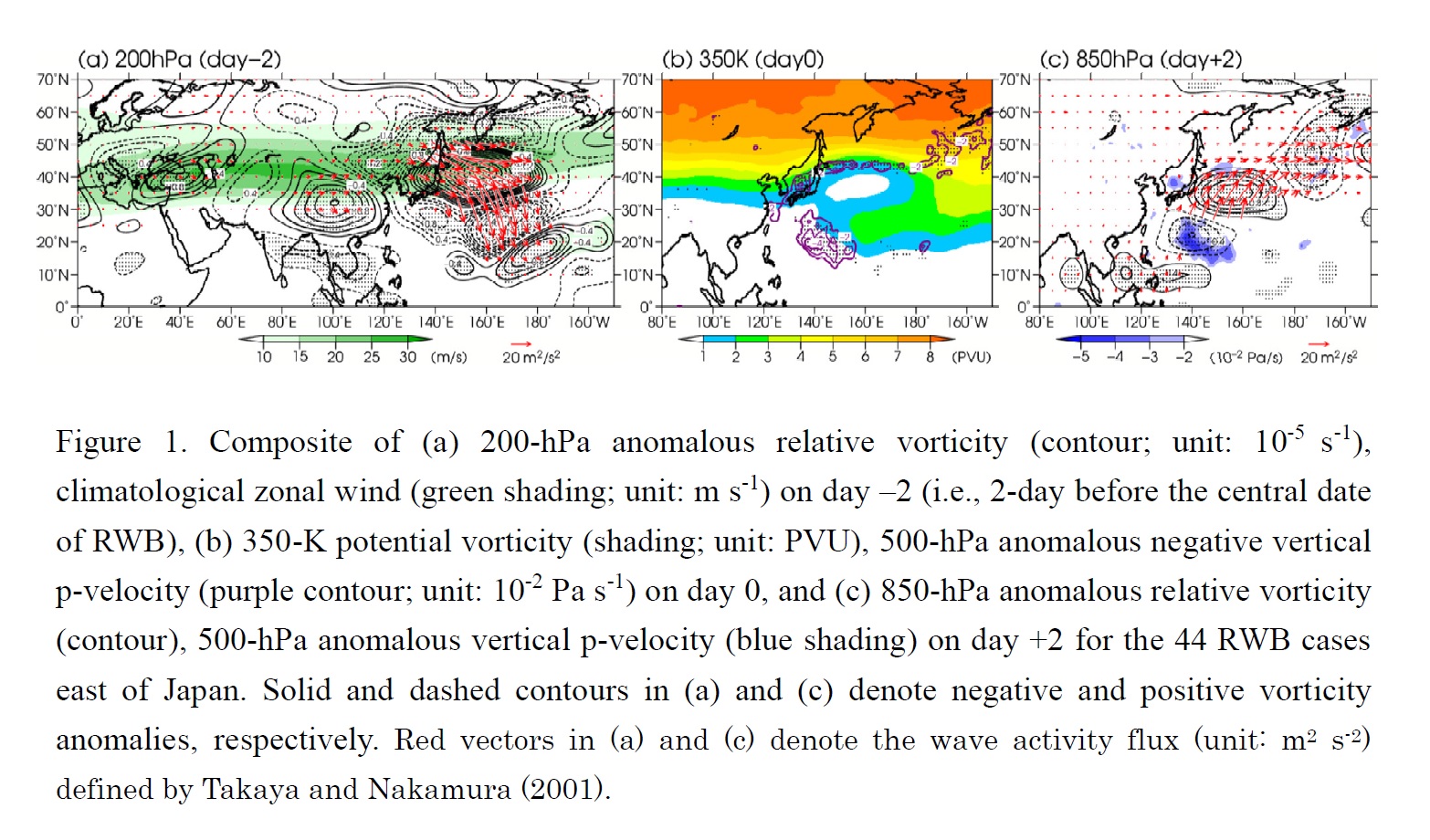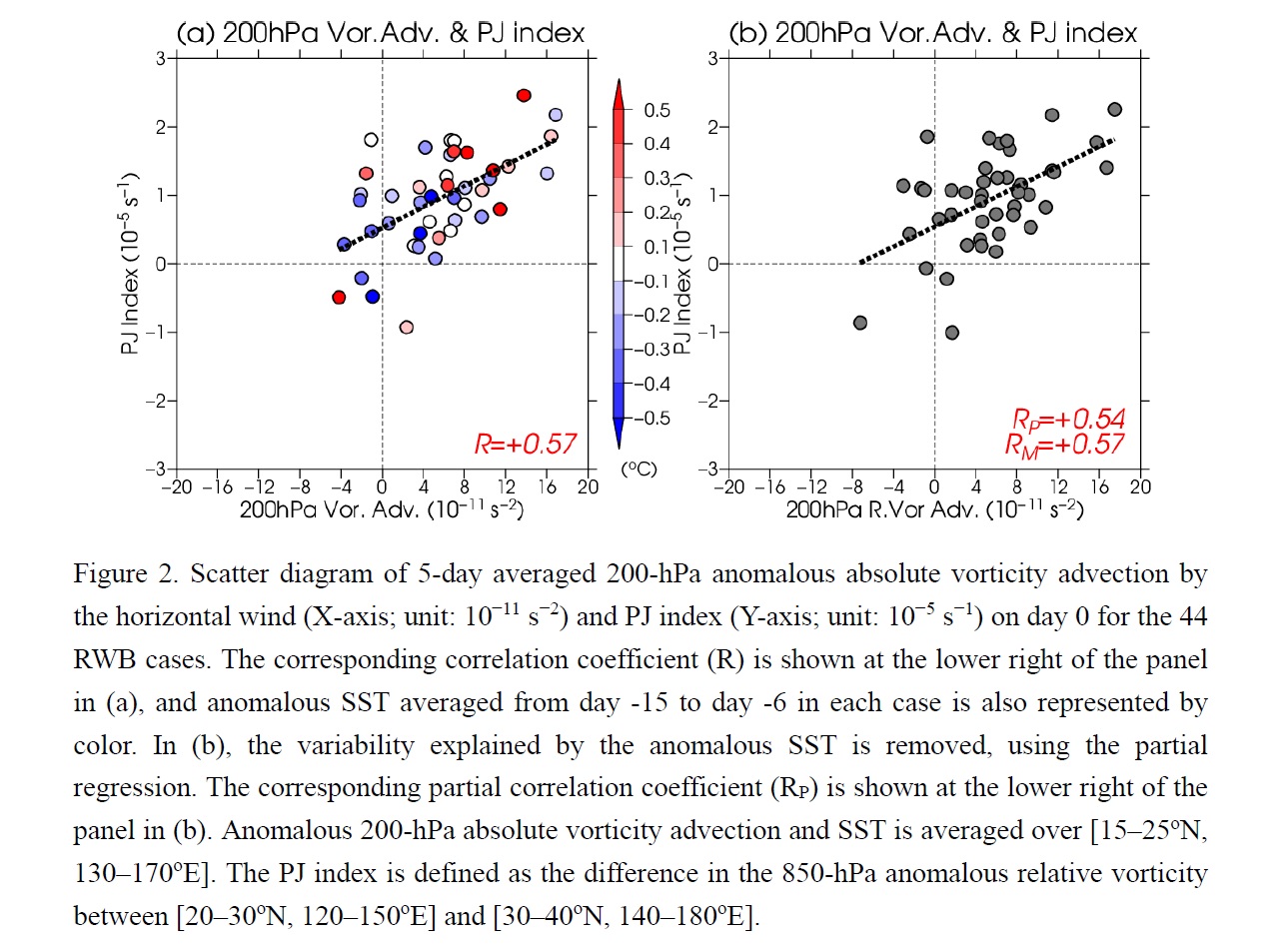JMSJ Highlights
Takemura and Mukougawa (2020)
Takemura, K., and H. Mukougawa, 2020: Dynamical relationship between quasi-stationary Rossby wave propagation along the Asian jet and Pacific-Japan pattern in boreal summer. J. Meteor. Soc. Japan, 98, 169-187.
https://doi.org/10.2151/jmsj.2020-010
Graphical Abstract with highlights
Overview:
A new possible process linking the quasi-stationary Rossby wave propagation over Eurasia along the
Asian jet and the Pacific-Japan (PJ) pattern through the Rossby wave breaking (RWB) near the jet
exit region during boreal summer is revealed. Although it has been noticed that the PJ pattern is often
preceded by the quasi-stationary Rossby wave propagation along the Asian jet, no solid evidence was
shown to elucidate the linking process and the associated dynamics. To assess the statistical
significance of the process, this study conducts a lag composite analysis and a partial correlation
analysis of the past 44 RWB cases using a reanalysis dataset. The results show that the
quasi-stationary Rossby wave propagation along the Asian jet can excite the PJ pattern, through the
RWB east of Japan and the consequent intrusion of the high PV toward the subtropical western North
Pacific.
The result of the lag composite analysis shown in Figure 1 indicates that the quasi-stationary Rossby wave propagation along the Asian jet, which is seen as a wave train over Eurasia in Figure 1a, induces the RWB accompanied by an amplified anomalous anticyclone east of Japan. The associated “inversed-S” shaped overturning of the upper-level potential vorticity (PV) distribution is clearly seen in Figure 1b. The consequent southwestward intrusion of the high PV toward the subtropical western North Pacific in turn excites the subsequent southwest–northeast-oriented dipole anomalies in the lower troposphere. The lower-level dipole vorticities with cyclonic circulation anomalies northeast of the Philippines and anticyclonic circulation anomalies east of mainland Japan, which is clearly seen in Figure 1c, indicate the formation of the PJ pattern.

The quasi-geostrophic diagnosis of the composite indicates that the upper-level positive vorticity advection associated with the RWB is an important factor dynamically inducing ascent and reinforcing convection over the subtropical western North Pacific, which excites the PJ pattern. Furthermore, a partial correlation analysis of the 44 RWB cases shown in Figure 2 quantitatively indicates the primary contribution of the upper-level positive vorticity advection over the subtropical western North Pacific to the formation of the PJ pattern, through the enhanced convection over the region.

References:
Takaya, K., and H. Nakamura, 2001: A formulation of a phase-independent wave-activity flux for stationary and migratory quasigeostrophic eddies on a zonally varying basic flow. J. Atmos. Sci., 58, 608–627. https://doi.org/10.1175/1520-0469(2001)058<0608:AFOAPI>2.0.CO;2.






